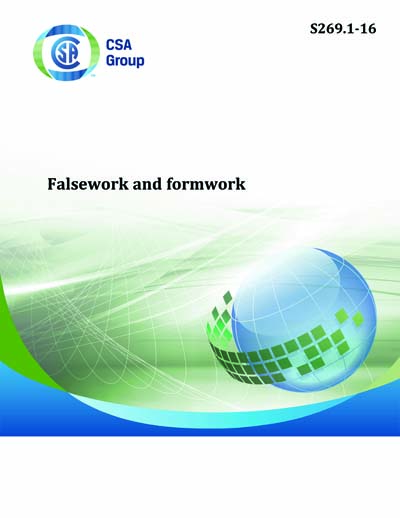Most recent
CSA S269.1-2016
S269.1-16 - Falsework & formwork
Preface
This is the second edition of CSA S269.1, Falsework and formwork. It supersedes the previous edition published in 1975 under the title Falsework for Construction Purposes. The following are the significant changes from the previous edition of this Standard: a) Provisions are now included for limit states design (LSD) while keeping provisions for allowable stress design (ASD), thereby letting the designer choose the method most appropriate. The aim in including LSD requirements is to be at least as safe as the existing ASD requirements. b) This Standard combines the previous CSA S269.1 (dealing with falsework) and CSA S269.3 (dealing with formwork) into one Standard to eliminate redundancy and improve user readability. c) A section on specialized formwork and falsework has been added. d) A new Annex A on plywood has been added. e) Updates have been made to scope, definitions, reference Standards, design, drawings, site activities, testing, figures, and tables. The updates will make this Standard more current and compatible with other similar documents.Scope
This Standard provides rules and requirements for the design, fabrication, erection, inspection, testing, maintenance, and use of falsework and formwork materials, components, and systems where they are erected to provide temporary vertical and lateral support or containment of freshly placed concrete for buildings and other structures during their construction, alteration, or repair, and includes the reshore of new slab systems that have not achieved full strength. This Standard also covers the design of perimeter enclosure systems. Notes: 1) Supplementary rules or requirements may be necessary for unusual types of falsework or formwork that- a) are exposed to unusual environments or features; b) employ materials or procedures not covered in this Standard; and c) are intended to be used many times for precasting applications.
CSA America, Inc. [csa]

